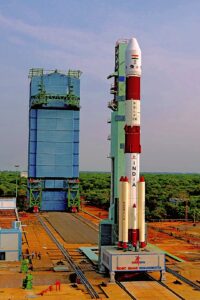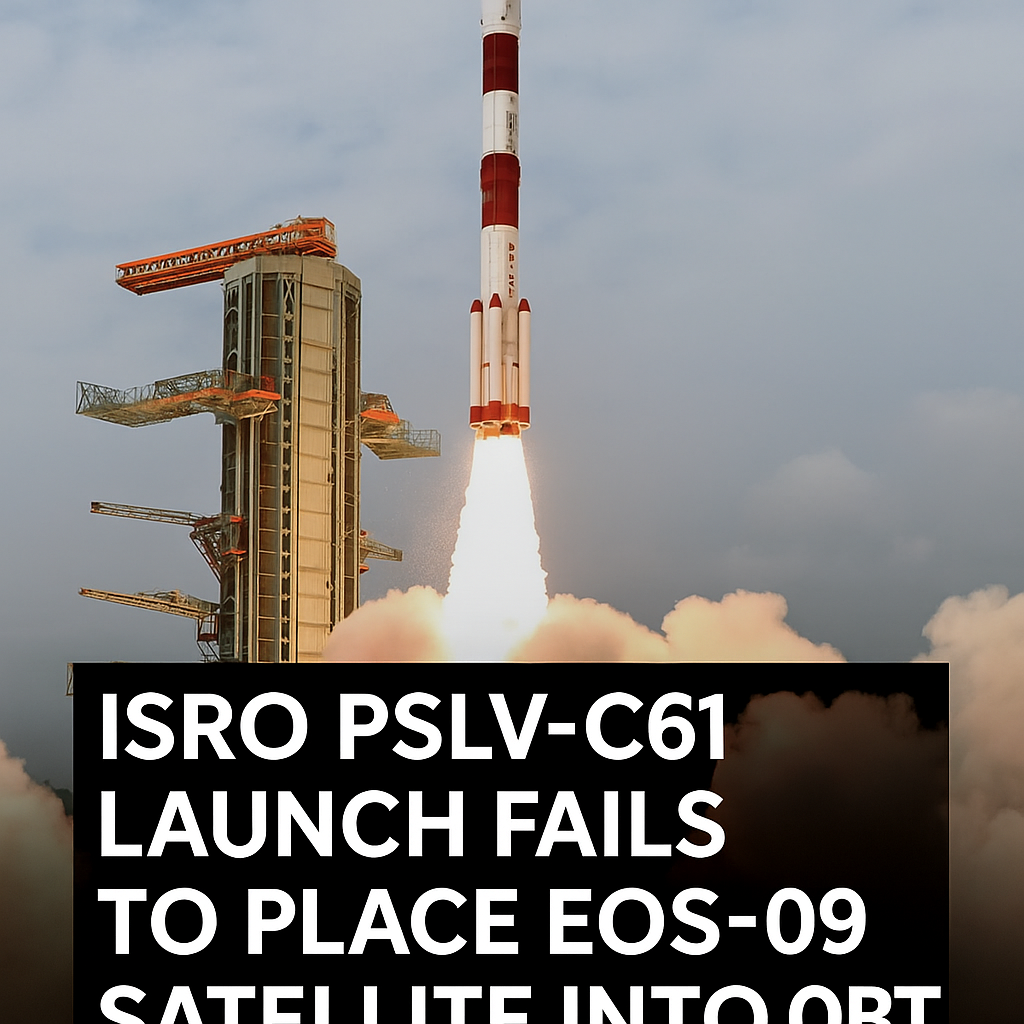ISRO’s PSLV-C61 Mission Failure: What Happened and What Comes Next?
On the early morning of May 18, 2025, the Indian Space Research Organisation (ISRO) faced a rare setback when its trusted workhorse, the Polar Satellite Launch Vehicle (PSLV), failed to deliver its primary payload, the EOS-09 (RISAT-1B) satellite, into the intended orbit. The mission, designated PSLV-C61, marked ISRO’s 101st launch and was supposed to strengthen India’s Earth observation capabilities.
ISRO’s PSLV-C61 MissionISRO’s PSLV-C61 Mission
What Was the Mission About?
The EOS-09 satellite was equipped with a C-band Synthetic Aperture Radar (SAR), intended for high-resolution, all-weather imaging. Its applications included disaster management, agricultural monitoring, forestry, and border surveillance. The launch took place at 5:59 AM IST from the Satish Dhawan Space Centre in Sriharikota.
What Went Wrong?
Initial phases of the mission went smoothly. The first and second stages of the PSLV rocket performed as expected. However, during the third stage, a critical anomaly occurred — there was a drop in chamber pressure. This deviation prevented the rocket from achieving the required velocity and altitude to insert the EOS-09 into its correct orbit.
ISRO Chairman Dr. V. Narayanan stated that a full investigation is underway to identify the root cause. He emphasized that while the mission was a failure, ISRO would learn and adapt quickly, as it has done in the past.
The Technical Breakdown
The PSLV is a four-stage rocket. Here’s a breakdown of what likely happened:
- Stage 1: Solid rocket booster – successful
- Stage 2: Liquid propulsion – nominal
- Stage 3: Solid propulsion – chamber pressure anomaly detected
- Stage 4: Did not ignite due to third stage underperformance
Impact on Indian Space Program
This failure has undoubtedly dealt a temporary blow to ISRO’s track record. However, ISRO has a strong history of resilience and recovery. Past setbacks, such as the Chandrayaan-2 landing failure, were followed by significant technological improvements and mission successes, like the Chandrayaan-3 lunar landing.
Critically, the Gaganyaan human spaceflight mission remains on ISRO’s priority list. Engineers and scientists will be keen to understand whether any system-wide issues from PSLV-C61 could impact future launches.
International Reactions
Space agencies and scientists around the world have expressed support and encouragement. The failure has also prompted discussions about risk tolerance in space missions and the importance of redundancy and testing.
What Comes Next?
ISRO will now focus on:
- Conducting a failure analysis and releasing a report
- Validating all PSLV systems and subsystems
- Preparing for upcoming missions including Gaganyaan, Aditya-L1, and Mars Orbiter-2
Final Thoughts
Failures in space exploration are not uncommon — even established agencies like NASA and ESA have experienced mission failures. What matters most is the response and learning that follow. For a country like India, with its growing technological and geopolitical ambitions in space, each failure is a step toward greater expertise and reliability.
Let us remember that every rocket that fails teaches us more than one that succeeds. The PSLV-C61 mission may not have reached orbit, but it has launched a new chapter of learning for ISRO and the global space community.
Stay updated with reliable science and space news here on our blog.
ISRO’s Legacy and the Road Ahead
Despite the PSLV-C61 setback, the Indian Space Research Organisation remains one of the most respected space agencies in the world. Its previous achievements, including the Mars Orbiter Mission (Mangalyaan), the Chandrayaan series, and the record-breaking launch of 104 satellites in a single mission, have earned it global admiration. Failures, while unfortunate, are part of every great scientific journey.
The key lies in learning from them. ISRO’s focus on indigenous development, cost-effective space missions, and scientific innovation ensures that such setbacks become stepping stones rather than obstacles. The upcoming missions like Gaganyaan, Aditya-L1, and NISAR (in collaboration with NASA) will demonstrate ISRO’s resolve to push the boundaries of space science and technology further.
https://www.youtube.com/live/y63x4kjvAc0?si=hFWJS2PbRFXc6W2S
Read more articles here SpaceX Starship Flight 9: Rewriting the Future of Space Travel




Pingback: Exclusive: Mining the Moon for Helium-3 — The Next Energy Revolution